4 ways to get ahead of the marketing personalization curve
If I had a dollar for every time I heard someone say that we “must personalize the customer journey” I’d probably be on a beach somewhere drinking daiquiris. Instead, I try to help people understand what personalization actually means for in-app marketing.
In the past decade, marketers have made a lot of progress in personalizing shopping experiences in stores and online. But when it comes to apps, the personalization game is still lacking; sure, some apps are doing personalized push notifications, but what happens when your users are in the app?
Apps are increasingly a place where customers spend their time and money, and so we must take hard-learned personalization lessons from other channels and think of how to apply them in apps.
Knowledge is Power
You might already be using in-app marketing, in the form of in-app messages, surveys, videos or banners. But if your strategy is “spray and pray,” and all your users see the same thing at the same time, you’re missing out.
The fact is that mobile apps (and their owners) know more about their users than any other channel. They know about their history of actions, their demographics and what they’re doing RIGHT NOW in the app. Combine all that and you have the perfect opportunity to come up with personalized, contextual offers when the users are most engaged with you.

Suggest a user an upsell offer based on what they just did in your app
Provide Safe Landing
I mentioned push notifications and the fact that you may or may not use them in a personalized manner. Sending different messages to different segments is a of course a good idea, but CTR isn’t everything, you want to consider the where the user lands.
Too often, apps get us excited with their push message, we click away and then land in… right, the app’s homepage.
Which leaves us wandering around, wondering why the app pushed such a promising deal/service/event/you-name-it and we have to figure out how to find it? A good push message will lead you to the most relevant place in the app. Moreover, if your in-app marketing system is well-established, you’ll be able to land the users on a piece of content that is dedicated to the push and enhances the info of the push message.

A push message should link the user to a meaningful page where they can learn more about your offer.
Lead the way
Did I just say YOU should lead the way? Isn’t it all about the user choosing her own path and you being attentive, listening to her digital body language and responding at the right mobile moment? All true, but sometimes it makes sense for you to lead your users to where you want them.
This doesn’t mean you have to be intrusive or even explicit when suggesting that your users visit a specific page in your app or see new content. You might know, for example, that in a ticketing app exposure to the review section means a user is more likely to make a purchase. In that case, a little nudge doesn’t hurt.
Directing users in ways that positively affect their journey in the app is doable, but use discretion.

Direct users with a mobile tooltip to enhance their experience and increase your conversion
Stay Ahead of the Curve
There are a few reasons why apps still don’t go all the way with these in-app marketing strategies. The typical duration of mobile development cycles does not align with the speed and agility you see on other channels like your website or email marketing, and that’s a serious hurdle. The main reason, though, is the relatively immature attitude towards mobile app engagement.
But, mobile usage continues to surge and end users have high expectations for personalized, non-intrusive experiences in the app. This pretty much guarantees that it’s only a matter of time before these strategies will be widely adopted.
 About the Author
About the Author
Polly Alluf is the VP Marketing at Insert, the first automated in-app marketing platform and the author of the Beginners Playbook to In-App Campaigns.
Link campaigns: Strategy development and review
Whether you’re planning to pursue links in 2017 or continue an existing link-building project, columnist Andrew Dennis reminds us that December is an ideal month to review your link campaign strategy.
The post Link campaigns: Strategy development and review appeared first on Search Engine Land.
How to Increase Engagement Using Video Thumbnails in Your Emails [Live Event]

Are you looking for new ways to experiment with your email marketing and increase engagement and conversion?
With video in general becoming a more and more important content format for marketers, we put our heads together with the folks at Wistia to see how using video thumbnails in your email marketing affects engagement. Spoiler alert: It makes a huge difference, and we want to share the results with you.
Join HubSpot Marketing Manager Chelsea Hunersen and Wistia Partner Coordinator Margot Mazur on Wednesday December 14 at 1 p.m. EST for the big reveal of brand new data. They’ll show you how to successfully incorporate video thumbnails in your brand’s email and marketing strategies.
More specifically, you can expect:
Never before seen data on video thumbnails in email
Wistia & HubSpot’s own experiment results
Tips on how to include video thumbnails in your email and marketing strategy
Bonus: Answers to questions submitted by actual audience members!
Save your seat now, and don’t forget to submit your questions.

![]()
Heavy discounts and post-Black Friday lull create challenges for retailers
The 2016 holiday shopping season has been one for the record books as far as online sales are concerned, with Black Friday and Cyber Monday sales reaching new heights.
But according to The NPD Group, many retailers could struggle to make the entire holiday shopping season a successful one compared to 2015. The firm, which collects and analyzes sales from leading retailers that provide it with weekly point-of-sale data, says that the fifth week of the holiday shopping season “brought the customary post-Black Friday lull, along with deeper discounts and more abundant week-long deals than in the past.”
As NPD’s Chief Industry Analyst, Marshal Cohen, explained, “Bigger discounts mean deeper holes to climb out of to match last year’s sales numbers.”
The NPD Group says that total dollar sales were down 5% this year in fifth week of the holiday shopping season, which includes Cyber Monday. Only one merchandise category, athletic footwear, registered a gain compared to 2015, with dollar sales rising a modest 2%.
All told, total dollar sales are down 3% this year through the first five weeks of the season. That would seem to mirror data from the U.S. Commerce Department, which says retail sales disappointed in November.
The digital divide
The record-breaking Black Friday and Cyber Monday sales figures are evidence of the fact that more and more of consumer purchasing activity is taking place through digital channels. But it’s important to remember that despite the growing importance of their websites and mobile apps, many retailers still operate as multi-channel businesses, so the online sales figures only tell part of the holiday shopping story.
Put simply, online retail is accounting for more of the pie, but the pie isn’t really growing.
While it looks questionable as to whether retailers will be able to turn the 2016 holiday shopping season into a true success, as CNBC has noted, “six of the 10 busiest days still lie ahead” according to retail analytics firm ShopperTrak.
Some analysts predict that this year’s Super Saturday, the last Saturday before Christmas, has the potential to produce more sales than Black Friday, and with cold weather blanketing much of the country, it would not be surprising if many of those sales take place online instead of offline.
That might help online retail set yet another sales record this year, but even if it does, hefty discounting could still make it hard for retailers to catch up no matter where their sales take place.
How to Build a Memorable Personal Brand on Twitter
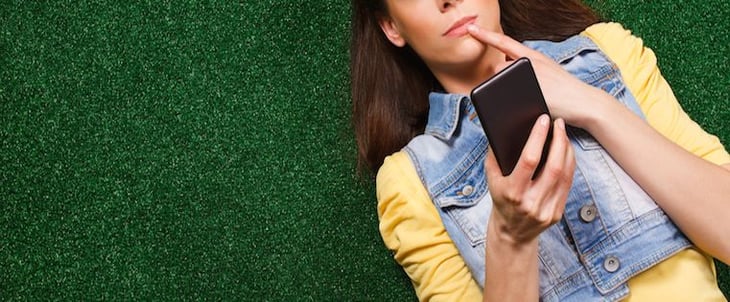
Imagine that you’re within 140 characters of connecting with a customer, prospect, or influencer. How can you afford not to reach out?
We’re talking Twitter, of course: the 300-million strong whirlpool of information that has emerged as a personal branding, relationship-building nirvana.
Twitter pros have found ways to use the platform to score business and media deals — they’ve even built relationships through developing successful Twitter personal brands. Yet, too many people have joined the community simply because they know they should be there, not because they’re strategic or focused.
When it comes to those that have managed to scale their following and build a reputable brand on Twitter, there’s a lot we can learn. To do this, I decided to go straight to the source, interviewing some well-known names with as many as hundreds of thousands of followers.
Thanks to their insights and generosity, I put together a eight-step road map for developing your personal brand on Twitter. Check it out below.
How to Build a Memorable Personal Brand on Twitter
Step #1: Follow the leaders.
Cheryl Burgess, author and CEO of Blue Focus Marketing, said she started off as a listener on Twitter, following people she admired like Kent Huffman, Tom Peters, and David Edelman, among others.
You see, the beauty of Twitter is that you don’t have to go far to discover a successful marketing playbook. The platform gives you free reign to observe how the pros do it.
Similarly, Neal Schaffer, CEO of Maximize Your Social and cofounder of The Social Tools Summit, says to follow people who are sharing a lot of content and who are omnipresent on Twitter. For Schaffer, that’s folks like Jeff Bullas, Mark Schaefer, Pam Moore, Lilach Bullock, Marsha Collier, and Glen Gilmore.
Over time, in addition to observing Twitter luminaries at work, start to engage them. Influencers, like anyone, appreciate praise. But don’t expect an immediate home run. If the influencer eventually follows you — or even better mentions you — you’ve scored a coup.
If you do directly reach out, see what you can offer in return – a mention in a blog post or article for instance. Burgess said she developed a relationship with Tom Peters by following him on Twitter and also recognizing him as part of a Twitter awards program she was running.
If you’re wondering what impact influencers can have, consider this: Nearly 40% of Twitter users say they made a purchase as a direct result of a tweet from an influencer.
Actionable Takeaways:
Create Twitter lists of your mentors whom you can then easily monitor. Think of it as having a front row seat to your favorite performers. “Grouping my audience into categories, I see what’s happening across the world quickly and seek opportunities to help and respond,” says Mark Schaefer.
Visualize your Twitter ecosystem using a tool like Mentionmapp. “Mentionmapp helps me decide whom to follow and the conversations I need to be part of,” says Burgess.
Step #2: Define your brand.
Clarify the type of person you want to be on Twitter. Think of this as an opportunity to showcase your capabilities, passions, and interests.
Peg Fitzpatrick, social media speaker, trainer, and author, refers to this exercise as “defining the seeds of your brand.” Fitzpatrick advises selecting two or three main topics for your brand content — for her personal brand, she zeroes in on media, her role as author (and speaker), and marketing.

Mari Smith, social media speaker, trainer, consultant, and author, has done this beautifully, explaining that she shares “quality, cherry-picked content pertaining to social media, business development, and time and life hacks with a sprinkling of spiritual uplift and a daily dose of motivational quotes.”
Actionable Takeaway:
Focus on three seeds, or go super-niche with one main focus. Do this and “you’ll build a solid Twitter following that will love your content,” says Fitzpatrick.
Step #3: Sharpen your profile.
Don’t leave your Twitter profile to chance or whim. It’s your face to the world on Twitter. While most people will find you through your content, they’ll then check out your Twitter profile.
Ensure that it defines your brand. Dump the default Twitter egg and use an image that highlights your brand, advises Burgess.
Burgess’ own profile leaves no doubts about her accomplishments and her focus:
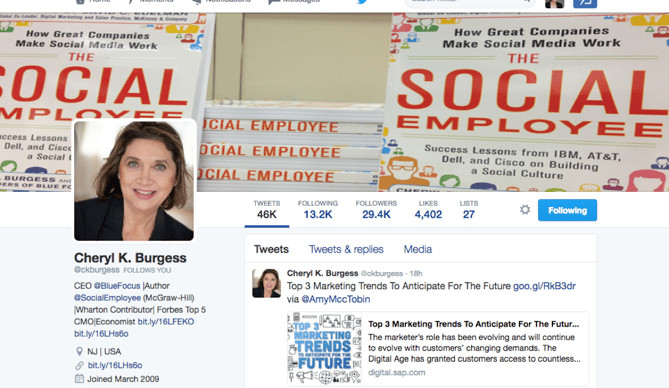
Actionable Takeaway:
Avoid the pet photos. “Unless you’re a veterinarian or your social media goals aren’t especially business related,” says Burgess, “it’s probably better to go with something else.”
Step #4: Create and curate great content. Repeat.
Tweet negative things and you’ll be seen as a naysayer. Tweet helpful, insightful content and you’ll grow your reputation. If there’s a common thread among those with impressive Twitter brands, it’s that they all post a steady stream of valuable content.
“You can’t tweet enough,” urges Schaffer. This doesn’t mean that you should aim for 100 tweets a day, but if you’re seeing positive engagement, keep it going.
The lesson? Find your rhythm. For example, Michael Brenner, author and CEO of Marketing Insider, says he tweets every hour typically from his smart phone while reading. “I’m a big fan of email newsletters,” he says. “I scan the headlines and if I read the article, I share it.”
While it’s tempting to rely solely on curated content, if you’re serious about building your personal brand, try to post some original content. “The fuel of social media is content,” says Schaefer. “I devote an enormous amount of time to creating original content on my blog which then becomes something I can deliver on Twitter that is helpful and unique.”
Smith says she likes to spotlight up-and-coming bloggers and experts that not many people are tweeting about. “I want to give people a leg up and not just share the same super popular blog posts others were sharing,” she says.
Actionable Takeaways:
Don’t share content without identifying the source or the author, says Schaffer. Don’t simply say via @HubSpot or @HuffingtonPost. Take the trouble to also identify the author, who will appreciate the mention.
Tweet with an image whenever possible. Posts with images on social media are 40X more likely to get shared. “I tweet 100% of my tweets with images,” says Schaffer.
Step #5: Engage.
Twitter is a two-way street: If you reach out, people are likely to engage with you.
“Put aside some time to reach out and engage with the tweets of your followers as well as influencers you would like to build a relationship with,” says Melonie Dodaro, a social selling speaker and trainer and author.
Smith says she “takes a quick peek at someone’s bio and recent tweets to find something to compliment or talk about to create a connection.”
Don’t expect, however, that you can outsource your engagement and be effective. All of the experts I spoke to, despite having massive number of followers, handle responses themselves.
Keep this in mind: “The heart of the brand is you,” says Schaffer, “and your engagements are you.”
Brenner calls relating in social “Give to Get (G2G)”: “Karma works in the social world,” he says. “Share the work of people you admire and they will take a second look at your own work. Over time, you will become an authority yourself.”
“Be yourself. It’s okay to mix business and personal,” adds Gini Dietrich, author and CEO of Arment Dietrich. “People want to know the person behind the brains. And you have to just do it. So many people overanalyze it and overthink it. Just jump in and start tweeting.”
Actionable Takeaways:
Avoid tactics that look like spam on Twitter. “At first I thanked every single person who retweeted my content,” says Brenner. “But then I just felt like a robot, blindly sending ‘thanks for the RT’ messages. Now I focus on those people who really seem interested in connecting.”
Don’t automate direct messages. Dietrich’s pet peeve is the auto direct message that encourages you to buy something from the person you just followed.
Don’t be blatantly promotional. Don’t say something like “buy my stuff,” says Brenner. “That’s the quickest way to lose followers and anger people.”
Step #6: Test and analyze.
Twitter gives you practically instant feedback. Almost as soon as you post something, you can see how it performs.
“Twitter is my number one platform where I share the most content and also the platform where I test content,” says Schaffer. “When I see what resonates, I know what to share on my other platforms, for my newsletter, blog posts, books, and other projects.”
Schaffer says he aggressively uses hashtags on Twitter so he can be found and manage his content, and also so he can compare how tweets with a certain hashtag perform against other hashtags.
Actionable Takeaway:
Take time to find the right tool for measuring and analyzing. “Find the one that makes sense to you and you’re comfortable with,” says Burgess, who uses Triberr for posting, RiteTag for finding the best hashtags, as well as several analytic tools.
Step #7: Outsource strategically, if at all.
According to Schaffer, you don’t need to outsource any of your Twitter efforts in the beginning. But once you start to scale your followers, consider outsourcing some of the administrative work.
“Outsourcing content curation is one of the first areas busy business owners ought to consider. It’s highly worthwhile and ensures your Twitter presence stays active and relevant,” says Smith. “I’m the only one that replies and engages, though,” she adds, “as I never actually delegate my conversations. I also live tweet events.”
At the same time, don’t outsource so much that your authenticity is lost, says Burgess. “To those that are considering outsourcing, first I’d recommend simplifying. You don’t need to tweet every five minutes and you don’t need to reply to every mention.”
Schaefer says, “I do 100% of my own tweets. I feel strongly that I don’t want to disappoint anybody. I never want to be in a position where somebody is engaging with me and then they discover that it’s not really me.” Schaefer says the only thing he outsources is some of the administration on his account, like managing followers.
Actionable Takeaway:
Find a system to help you find, curate and share content, says Neal Schaffer, who personally uses Sprout Social. Schaeffer says you don’t need a monitoring tool unless you’re a well-established brand. “The @ mentions of your name are enough for most people.”
Step #8: Commit.
Now that you know what to do, you need to devote time each day to just doing it.
Brenner’s advice? “You have to find the time to make small investments in social every day,” he says.
“Tweet once a day. Blog once a week (if that’s all you have time to do). Do whatever works for you and be realistic. It’s amazing what happens after a year. You’ll have sent hundreds of tweets, created dozens of blog posts, connected with lots of great people and learned more than you would have ever imagined.”
Actionable Takeaway:
Find your focus by following one course until successful and stick to it, says Smith. “Publish daily tweets around your chosen focus. But don’t forget to engage, too.”
Building Your Brand
These Twitter brand experts have cracked the code. And so can you if you follow these seven steps. Remember the adage: Success is no accident. You have to work at it.
What are your best tips for building a memorable brand presence? Share them below.
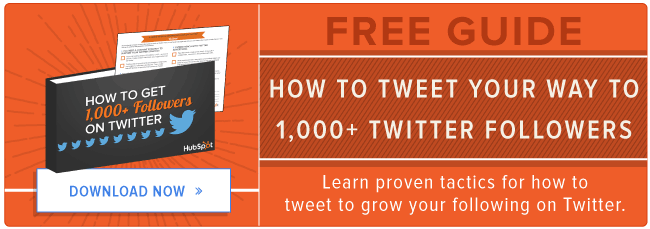
![]()
Animal Influencers: The Stories Behind 11 Famous Pets on Instagram
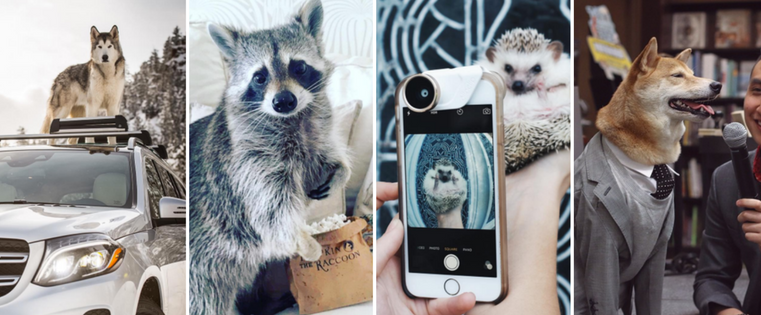
They command international attention, have amassed millions of followers on social media, and collaborate with the world’s biggest brands.
But you still have to pick up their poop.
Animal influencers are undeniably on the rise. These pampered pets (and their owners/handlers/entourages) enjoy a level of social media fame usually reserved for well, human celebrities, and bring in real revenue through their high-profile partnerships with brands like Zappos, Mercedes-Benz, Purina, and even Google.
In other words, these adorable fluff balls make more money on a single Instagram post than you, a human, will probably ever make on a single Instagram post. Let that sink in for a minute.
According to Create&Cultivate, social media influencers (animal or otherwise) can expect to earn around $3,000 per sponsorship deal when they hit between 150,000 and 250,000 followers. Many of the pets on this list have over one million followers.
So why the sudden demand for four-legged brand ambassadors?
“People have this innate perception that pets generate warm, happy, fuzzy feelings,” said Loni Edwards — owner of Chloe (as in Instagram-famous @chloetheminifrenchie) — to Digiday. “Brands are starting to reach out because they make people genuinely happy, and they want their ads to make people happy.”
It turns out people really like cute animals — even if those animals are promoting things. “You don’t notice that you are getting advertised to, or you don’t care, because you’re seeing a super cute dog,” Katie Sturino (owner of another famous pooch, @toastmeetsworld) explained to Fortune.
In addition to sponsorship deals, many of these pets generate income from their own branded products, such as books, calendars, apps, clothing, mugs … you name it, and somebody has plopped a cute animal on it and sold it on the internet.
Is this whole thing a little weird? Maybe. Did I follow all of these animals on Instagram? Absolutely I did.
Read on to see how 11 of these furry social celebrities are building their brands and growing their empires.
11 Famous Animal Influencers
1) Harlow, Indiana and Reese: @harlowandsage
Number of Instagram followers: 1.4m
This adorably photogenic trio consists of one very tolerant Weimaraner (Harlow) and two rambunctious Miniature Dachshunds (Indiana and Reese). In what is possibly the cutest rise-to-fame story ever, the three pups became an international internet sensation by snuggling.
Their owner, Brittni Vega, has made sure the cuddly canines use their fame for good. They recently partnered with dog food brand Purina to benefit the Canine Health Foundation, and have worked with Love Your Mellon, a cancer charity.
Harlow, Indiana, and Reese have also worked with Clorox to raise awareness about Parvovirus, a potentially fatal virus for dogs, and Petfinder, to help shelter dogs find homes. Other promotional clients include Petco, Figo Pet Insurance, and the Subaru Puppy Bowl.
Vega even spun the dogs’ popularity into a second Instagram account, @harlowandfriends, which exclusively features photos of dogs available for adoption.




2) Loki: @loki_the_wolfdog
Number of Instagram followers: 1.3m
When Mercedes-Benz needed a rugged, handsome new spokesmodel for the 2017 GLS SUV, they didn’t reach out to any old movie star — they got Loki, a Husky/Arctic Wolf/Malamute mix, to be the face of their latest campaign (Move over, John Hamm).
“Loki and his story aligned particularly well with our SUV portfolio,” said Mark Aikman, general manager of marketing services for Mercedes-Benz USA, to Digiday. “Our research has shown that a large number of SUV owners have pets.”
Known on Instagram as “Loki the Wolfdog”, this gentle giant spends his days traversing the great outdoors with owner Kelly Lund, who donates the revenue generated from Loki’s merchandise and sponsorships to two animal charities: Canine Support Teams and Eagle Trail Mountain Wolf Sanctuary.
Loki has become a magnet for brands looking to promote an outdoorsy lifestyle, including REI (he’s a social media sponsor for their annual #OptOutside campaign), GoPro, Rigid Industries LED Lighting, and Google Photos.




3) Nala: @nala_cat
Number of Instagram followers: 3.1m
This cross-eyed feline is closer to matching Kim Kardashian’s 88.3m Instagram follower count than you, probably.
Meet Nala, a six year old Siamese and Tabby mix with baby blue eyes and short, chubby legs. Since she first popped up on Instagram back in 2012, this remarkably photogenic cat has been racking up followers and brand sponsorships left and right.
She’s been featured on media outlets like BuzzFeed and Daily Mail, and has sponsorships with major brands like Friskies, Persil ProClean, and Zappos. She even recently ran a giveaway for Google’s new Pixel smartphone, which the brand gave her as a gift.
It doesn’t hurt that Nala’s owner, Los Angeles resident Varisiri Methachittiphan (known by her nickname “Pookie”) has an MBA and strong business acumen. She’s even started an empire for her other cat, Mr. White, who has a respectable 1.3m Instagram followers of his own under the handle @white_coffee_cat_.




4) Pumpkin: @pumpkintheraccoon
Number of Instagram followers: 1m
How does it feel to be less popular than a raccoon? Because unless you have one million Instagram followers, you’re losing the social media rat race to a plump raccoon named Pumpkin.
Pumpkin is a domesticated raccoon living a charmed life in the Bahamas with her owner, Laura Young, and canine siblings Toffee and Oreo. Her favorite activities include lounging on the couch, eating avocados, and petting dogs.
While her Instagram account is noticeably devoid of sponsored posts for now (besides a few posts promoting animal rescue charity BAARK), Pumpkin is a personal branding machine. She has a book — Pumpkin: The Raccoon Who Thought She Was a Dog — and has been featured on CBS, ABC, EW, and TV specials for BCC and Animal Planet.
And yes, Pumpkin is eating popcorn out of a Pumpkin the Raccoon branded bag in one of the below photos.




5) Chloe: @chloetheminifrenchie
Number of Instagram followers: 147k
A burgeoning fashion icon, Chloe has been featured in major publications like Martha Stewart and Vogue. She has her own line of fancy dog scarves (a collaboration with luxury human scarf brand Donni Charm) and Pawtty Bags, which her website describes as “essentially little dog purses to hold poop bags.”
For her second birthday, Chloe’s owner/manager, Loni Edwards, went all out, throwing a charity bash to raise money for the Humane Society of NY. The party was sponsored by BarkBox, Kind Bars, and Bloomingdale’s, among many others.
Edwards, a lawyer turned entrepreneur, started Chloe’s Instagram initially as a way to share photos of the ridiculously cute pup with her friends and family. In just a few short years, managing Chloe’s social media presence and endorsements has evolved into her full-time job.
“It became more than me and my friends following her — there were strangers appreciating her cuteness,” Edwards said to Racked about Chloe’s rapid rise to stardom.




6) Bodhi: @mensweardog
Number of Instagram followers: 289k
Clothing brands like Coach, American Apparel, and Brooks Brothers have a new muse: a gentlemanly Shiba Inu named Bodhi. Thanks to his affinity for perfectly tailored suits and brooding stare, this photogenic pooch has made a big splash in the fashion world, starring in major campaigns and even posing for exclusive fashion spread in the New York Times.
Bodhi’s fame was no accident. His owner and full-time handler, Yena Kim, quit her job at Ralph Lauren to focus on building her dog’s brand online. What seemed like a gamble at first has really paid off for Kim and her husband, graphic designer David Fung.
Bodhi’s big break came in the form of a viral Tumblr post, and soon brands were reaching out to Kim and Fung as if they were like any other human fashion blogger seeking promotions. Today, Bodhi is sponsored by brands like Rockport Shoes and Gentleman’s Box on Instagram, and has his own fashion book.
“He’s the dog version of the Dos Equis guy,” Fung said to Business Insider, “the most interesting dog in the world.”




7) Tuna: @tunameltsmyheart
Number of Instagram followers: 1.8m
Just like many human social media influencers, Tuna, a Chihuahua Dachsund mix with an undeniably endearing overbite, strives to project an authentic image across his many social platforms. And that means being very selective about the brands he chooses to work with.
“It’s enticing when you are offered big posting deals,” Tuna’s owner, Courtney Dasher, told Vice. “But if I’m not at peace with the idea or think it’s not a good fit with Tuna and the brand of Tuna, then I politely decline.”
The pint-sized pup mainly partners with animal rescue organizations and charities, but he also has an online shop that sells mugs, shirts, and other goods emblazoned with his toothy visage. If you’re really feeling that Tuna fever, you can even purchase an oxidized bronze ring shaped like his entire head. Because why not.




8) Toast: @toastmeetsworld
Number of Instagram followers: 370k
Toast, who is a dog, reportedly wore a custom Marchesa gown and $139,000 diamond necklace to her wedding, which was covered by Newsweek, People, and Town & Country. Toast (who, again, is a dog) married Finn Hearst (also a dog) after the two met at a charity gala and really hit it off, apparently.
The wedding was a charity fundraiser and promotional stunt for Zola, a wedding registry site, and it was hardly Toast’s first foray into the realm of brand promotions. Toast, who is represented by DBA (Digital Brand Architects), is an eyewear spokesmodel for Karen Walker, and has promoted big brands like Febreeze and Swiffer. She’s also currently the face of The Shelter Pet Project’s latest campaign, appearing in print ads and billboards around the country.
The toothless Cavalier King Charles Spaniel — who was rescued from a puppy mill — gained popularity on Instagram for her iconic floppy tongue and apparent tolerance of being dressed up.
Toast’s owner, Katie Sturino, told Newsweek she’s aware some people might find her profession a bit strange, but she’s managed to use her dog’s fame for good, raising awareness for the deplorable conditions at puppy mills.




8) Hamlet: @hamlet_the_piggy
Number of Instagram followers: 305k
While the vast majority of animal influencers are dogs and cats, some pigs are getting in on the action too. Hamlet, a charismatic mini pig who enjoys wearing wigs and having maple syrup poured directly into her mouth, has found unexpected fame on Instagram and Snapchat.
Hamlet’s owner, Melanie Gomez, adopted the unusual pet as a support companion after her epilepsy became hard to handle on her own (her husband is extremely allergic to dogs, so a pig was the next best option). She began posting Hamlet’s photos online as a way to make others happy, and never expected that the petite piglet would become an internet superstar.
Now a few years into her social media career, Hamlet has been spotted showing off a handful of products on Instagram, including Tostito’s snacks, Bose’s line of NFL headphones, and the Ollo Clip iPhone lens.




9) Lil Bub: @iamlilbub
Number of followers on Instagram: 1.4m
It would be an understatement to call Lil Bub a viral social media celebrity. The toothless tabby cat — born with a short lower jaw which exposes her tongue — was arguably one of the first big animal influencers on the scene, right up there with the ubiquitous Grumpy Cat.
Just a quick scan of Lil Bub’s extensive Wikipedia page reveals just how weirdly famous the quirky, stubby-legged cat has become. Here are a few highlights:
In 2015, a group of scientists crowdfunded $8,225 to sequence Lil Bub’s genome. The project was called LilBubnome.
Lil Bub is credited on the 2015 electronic album Science & Magic as a vocalist.
Vice produced a feature length documentary on Lil Bub in 2013 called Lil Bub & Friendz. It premiered at the Tribeca Film Festival, and Lil Bub got to meet Robert De Nero.
Name any object, and it’s probably sold with Lil Bub’s face on it. The cat has a series downloadable ringtones, a weather app, and a line of watches. Way to go, Lil Bub — you’re more successful than most startups.




10) Doug the Pug: @itsdougthepug
Number of followers on Instagram: 2.2m
Doug the Pug, the self-declared “King of Pop Culture”, is just like us. He likes to unwind after a long day with a hot bubble bath and a glass of pinot noir.
Unlike us, Doug the Pug has millions of followers on social media, a book deal, and a close friendship with Chrissy Teigen.
Doug’s owner, Leslie Mosier, got her start in the music industry before becoming a full-time “momager” for her dog. She applied her PR background to Doug’s career, and the pug was quickly featured on Mashable and BuzzFeed. One Facebook video in particular — a 16-second clip of Doug playing with a pug balloon — went viral overnight, skyrocketing Doug to 2.2 million followers on Instagram and over five million Facebook likes.
When Doug isn’t promoting his book, calendar, or collection of stuffed animals, he can be found promoting brands like Febreeze and repping Dentastix at the Country Music Awards.




11) Lionel: @lionelthehog
Number of Instagram followers: 95.9k
Instagram does not discriminate by species. If you are a cute animal and you like wearing little hats or holding little umbrellas, the followers will come.
Say hello to Lionel, an adventurous hedgehog with a taste for the finer things in life. Lionel’s owner, Anna Mathias, works full-time in PR, and began Lionel’s Instagram account as a side project to show off her social media chops. In a few short weeks, he was featured on BuzzFeed, and the rest is history.
On Instagram, Lionel represents brands like The Book of the Month Club, Daniel Wellington watches, and Style&co, a (human) clothing retailer. This year, he even collaborated with West Elm and the ASPCA to release a custom holiday ornament and tea towel.




Who are your favorite animal influencers? Let us know in the comments.
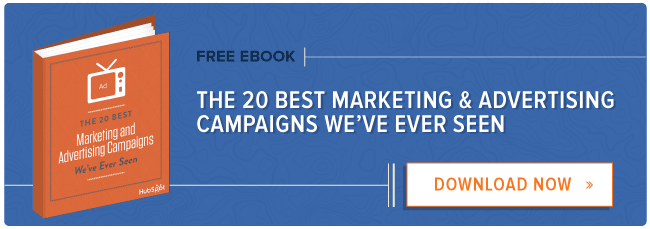
![]()
Dibz: Link Building (Almost) Automated by @sejournal
An effective SEO strategy needs to generate high-quality link building opportunities. Dibz is a link prospecting tool that automates this process and allows you to focus on content development — and all the other aspects of your SEO strategy.
The post Dibz: Link Building (Almost) Automated by @sejournal appeared first on Search Engine Journal.
![]()
Compare 16 leading digital analytics platform providers
Digital analytics play a crucial role in nearly every enterprise’s digital marketing strategy, not only for tracking and measuring website traffic, but for tracking and measuring other digital channels as well. Marketing Land’s “Enterprise Digital Analytics Platforms: A Marketer’s Guide” examines the market for digital analytics platforms and the considerations involved in implementation. The 42-page […]
The post Compare 16 leading digital analytics platform providers appeared first on Search Engine Land.
How the Brain Processes Different Types of Content [Infographic]

Sometimes, the movie adaptation of a book is better than the book itself. Maybe it’s the acting, maybe it’s the special effects or the soundtrack, or maybe the story is simply better told on the big screen than in our imaginations.
The reason? Different stories are better told in different formats depending on the message they’re trying to convey.
The folks at Main Path Marketing created an infographic to break down common types of content marketing formats and how they communicate information to your audience. And some of their insights may surprise you. For example, did you know that the human brain processes videos 60,000X faster than text? That’s part of what makes how-to videos so popular in online search habits. 
Check out the full infographic below for helpful takeaways about how to tailor your content strategy according to how your audience interprets information.

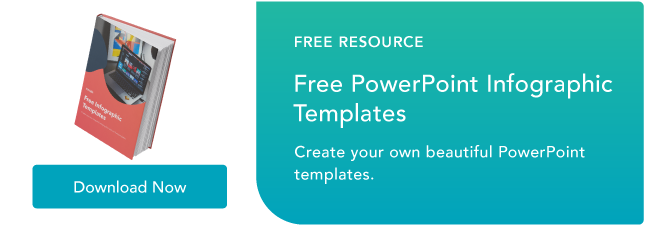
![]()
50% of Digital Marketers Say Earned Media Will Deliver Best Returns in 2017 [DATA] by @rinadianewrites
If you’re laying out some last-minute marketing strategies, you may be thinking of different types of media — earned, owned, or paid — that you can leverage to get the best results next year. So which of these media can give you the best return in 2017? We have the answers for you based on our latest #SEJSurveySays poll results!
The post 50% of Digital Marketers Say Earned Media Will Deliver Best Returns in 2017 [DATA] by @rinadianewrites appeared first on Search Engine Journal.
![]()

